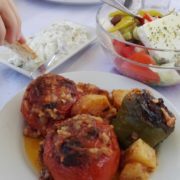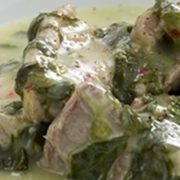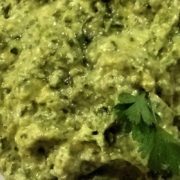The Local Cuisine of the Cyclades is very versatile and delicious. Every summer since 2005, Omilo organizes Greek Language and Culture Courses on Syros, one of the Greek Cyclades Islands. Located close to each other, their beautiful landscapes, bright Aegean sun, clean blue waters and cosmopolitan vibes make them an ideal summer destination. Of course, adding delicious food to your holidays, is even better! Keen to find out more? Keep reading – and next time you visit Syros you’ll have more confidence ordering from the menu at the taverna!
A bit of history about the Cyclades cuisine
Most Cyclades islands have a fairly rough landscape. They’re mountainous with dry land where few greens grow, whereas their overall resources can be limited. Traditionally, the locals were not very rich and transport between the islands depended heavily on the weather conditions. As a result, housewives had to be creative in order to feed their families with the ingredients available.
Between 1950 – 1970, the population of the Cyclades went down significantly since the people moved to large urban centres to find work and pursue a better quality of life. In the decades that followed, the islands became more densely populated again and went through a stage of a revival thanks to the tourism blooming but it wasn’t until the 2000s when people – both locals and visitors – got interested in the local cuisine and decided to go back to their roots food-wise. They saw an opportunity to honor their gastronomical traditions and to boost their economy by sourcing local products.
How about Syros?
Syros is the exception to this rule due to its cosmopolitan character. Hermoupolis, its capital, was also the capital of all the Cycladic islands and the leading commercial and industrial center of Greece for a specific period. Its residents were thus more affluent than the ones of the neighboring islands. Moreover, even though theoretically the island belonged to the Ottoman Empire from some point onwards, it was always under the rule of Franks, who left their mark to their local cuisine as well.
So, more about Greek food…
Of course, this is not an exhaustive list of all the local foods but it’s a good place to start if you’re curious about local cuisine when visiting Syros and the surrounding Cyclades islands. Consider it your cheat sheet to decoding the menu at the taverna when you see something you haven’t tried before!
Kakavia – this is a traditional fish soup that is usually made with whatever type of fish people have at hand (in the past it was usually whatever the fishermen hadn’t managed to sell that day) together with a selection of potatoes, onions, scallions, carrots, leeks, tomato, olive oil, herbs, water and – occasionally – white wine. It’s very likely that every village and every household has its own recipe. Kakavia takes its name from “kakavi”, a big ceramic cooking pot used by fishermen in ancient Greece to make this soup.
Other fish – in Paros as well as other islands you’ll find marides, gouna, savridia and other small fish which have either been dried in the sun or cured with salt. They are usually served as mezedes (appetizers) together with ouzo or raki to balance out their strong flavour. In Santorini you’ll also find psarolia, another type of small fish, which often accompanies its famous fava (yellow split pea dip).
Louza – cured pork tenderloin which is a local delicacy in both Mykonos, Kea and Santorini. It is typically salted or brined then dry-cured or smoked. You will find different variations of sausages and cured meats across all islands depending on the part of the animal used but – most importantly – on the spices: in Mykonos they use savory (or throumbi), in Syros they prefer fennel and in Kea they often add orange peel.
Cheese – the islanders mix goat and sheep milk to make a plethora of cheeses. Some of these are sweet – like anthotiro and mizithra, which in the Cyclades is often used on top of the typical Greek salad instead of feta. The soft cheeses are used to make sweet pies: cheese is mixed with eggs and sugar or honey, and this mixture is used to fill a large pie, the melopita, or smaller individual ones. These are called melitinia in Santorini, tiropitakia in Paros, tsimpita in Mykonos – every island has a different name for them and uses different spices, the most common of which are cinnamon and clove. The list of cheese does not end there though: we have graviera and arseniko from Naxos, kopanisti from Mykonos, petroma and strogilo from Tinos, manoura from Sifnos, ksinomizithra (or ksino) from Paros, skotiri and niotiko from Ios, San Michali from Syros and many more.
Chickpeas – this humble pulse is a mainstay in the cuisine of Sifnos, Serifos and Paros. They are usually baked in the oven for a long time in a clay pot together with onions, tomato, herbs and spices.
Fava – Santorini is well known for its fava, the yellow split pea dip. The basic recipe is simple; fava is served with chopped onion, olive oil and oregano. There is a variation called pantremeni, which translates as “married” in Greek and stands for fava cooked with pork fat and onions and is served with caper. The yellow split peas are used to make fried patties with flour, dill and other herbs.
Kopania – barley crackers crushed together with raisins and shaped into little balls to create this little sweet treat, which are then sprinkled with roasted sesame. You’re more likely to find kopania in Santorini.
Greek Recipe Ntomatokeftedes (Greek tomato fritters)
Ingredients:
7 tomatoes peeled, 2 onions grated, 200g feta cheese, 1 mint sprig, 1/2 cup flour, oil for frying, salt –pepper
Method:
• Wash the tomatoes, peel them and cut into small pieces.
• Place them in a colander for a bit and then give them a little squeeze to drain their juices.
• Use a fork to coarsely chop the feta cheese.
• In a bowl, combine the onions, mint, flour, tomatoes, feta, season with salt and pepper and mix gently for the ingredients to form a smooth batter. Refrigerate the mix for half an hour.
• Place a deep pan with a generous amount of oil over heat.
• Using a tablespoon, shape the tomato fritters into small patties and add them to the pan with the hot oil. Leave them to fry until golden from both sides.
• Transfer them with a slotted spoon on a dish lined with paper towels to absorb any excess oil and serve them warm.
The recipe is mentioned on this website;
https://mageirikikaisintages.blogspot.com/2012/05/blog-post_27.html
+++++++++++++++++++++++++++++++++++++++++++++++++++++++++++++++++++++++++++++
Interested in another typical recipe of Syros island? Then also click here and try the „parsley dip“








